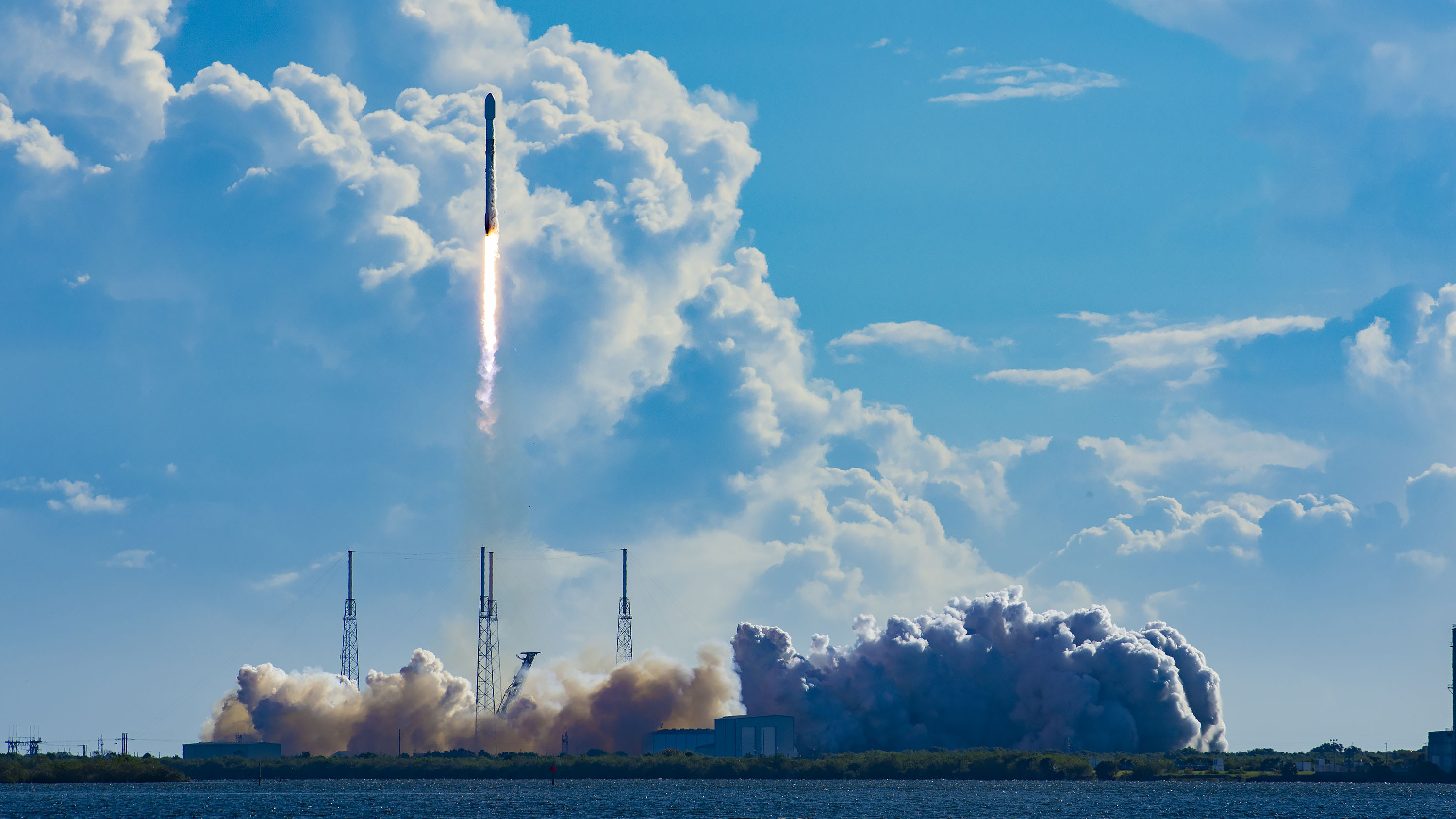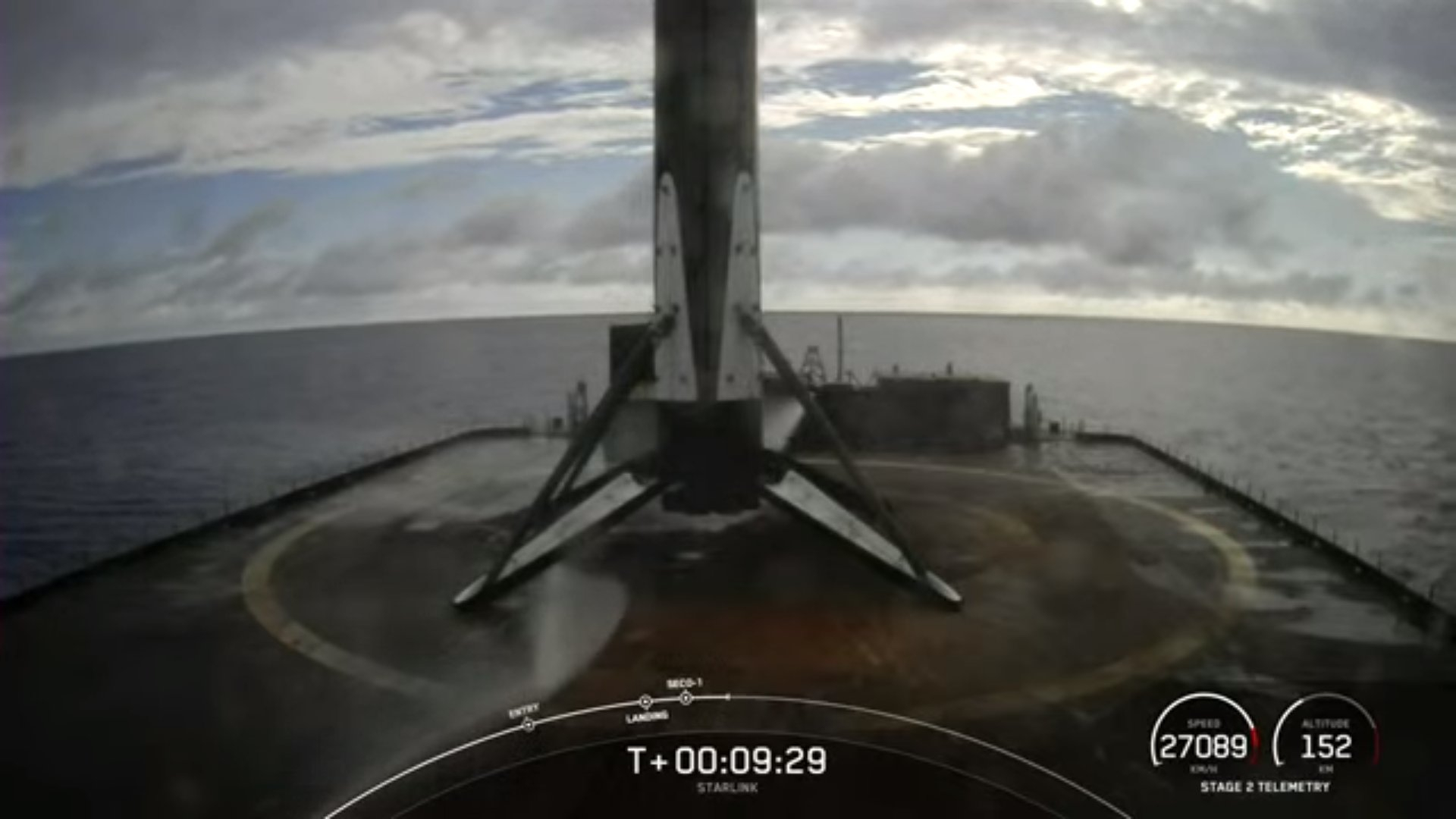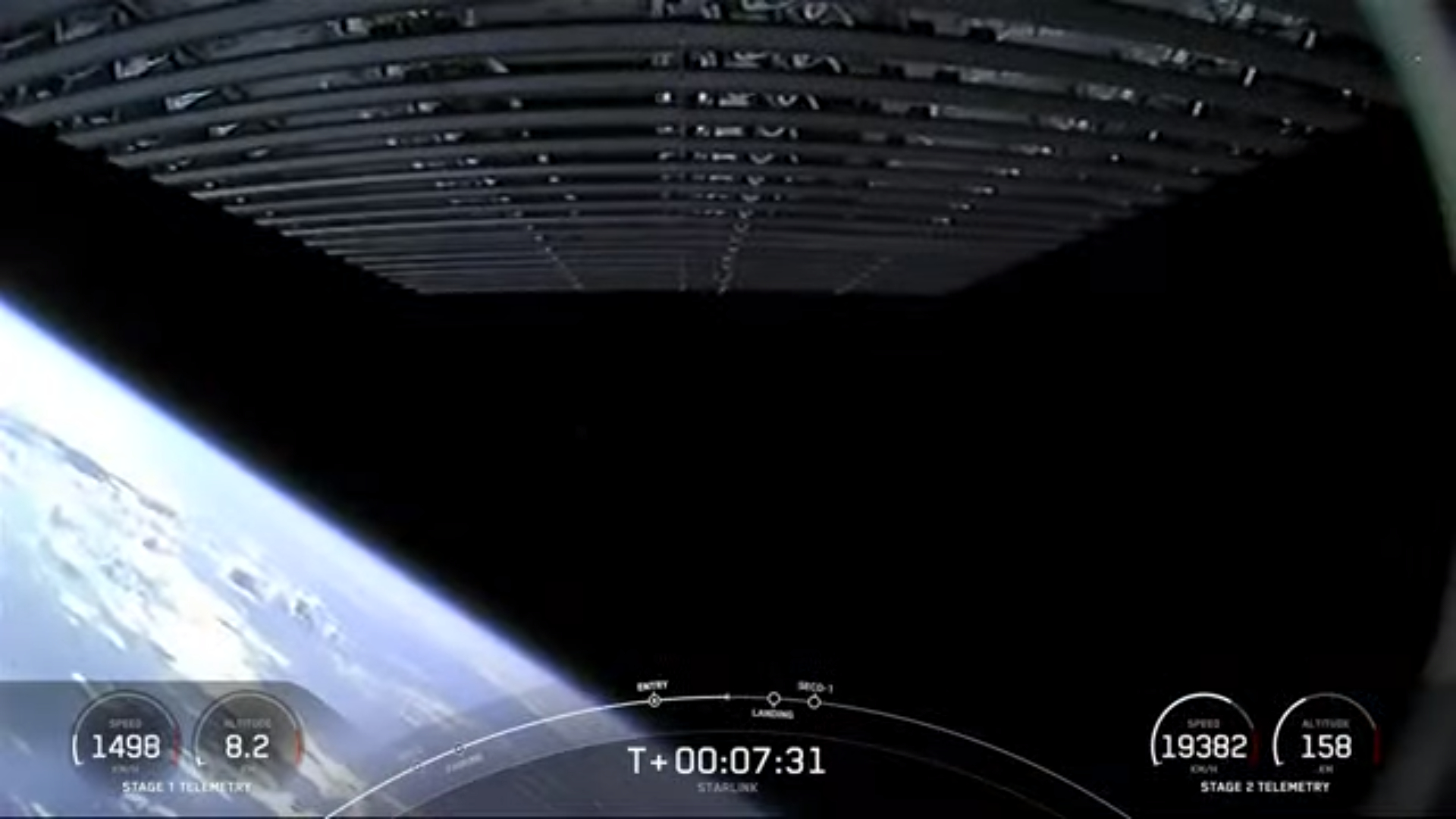SpaceX launches 22 Starlink 'V2 mini' satellites into orbit, lands rocket at sea (video)
It's the 1st of 2 SpaceX launches from Florida today and comes 13 years to the day of the 1st Falcon 9 flight.
SpaceX launched a fleet of new Starlink internet satellites into orbit early Sunday (June 4) in a stunning morning liftoff.
A Falcon 9 rocket carrying 22 of SpaceX's new "V2 Mini" internet satellites for its Starlink communications constellation lifted off 8:20 a.m. EDT (1220 GMT) on Sunday from Space Launch Complex 40 at Cape Canaveral Space Force Station in Florida. Eight minutes later, the Falcon 9's first stage booster returned to Earth to land on SpaceX's drone ship Just Read The Instructions. in the Atlantic Ocean.
The smooth launch and landing marked the first of two Florida launches planned by SpaceX today. Another Falcon 9 rocket was scheduled to lift off from the nearby Pad 39A at Kennedy Space Center to launch an uncrewed Dragon cargo ship to the International Space Station for NASA, but bad weather forced SpaceX to delay it to Monday (June 5). Today's launch came 13 years to the day of SpaceX's first-ever Falcon 9 launch in 2010.
Related: Starlink satellite train: How to see and track it in the night sky

The launch of SpaceX's Starlink mission today had been delayed from May 30, when the company also launched 52 other Starlink satellites. The need for final technical checks on the Falcon 9 booster and bad weather kept the flight on the ground until Sunday.
Bad weather has been a thorn in SpaceX's side for both the Starlink and Dragon CRS-28 cargo launch, but that may be easing. Earlier Sunday, SpaceX wrote that today's Starlink launch faced a dismal 15% chance of good weather for flight, but that forecast improved to 90% "go" about an hour before liftoff.

SpaceX's V2 Mini satellites are more powerful versions of its earlier Starlink spacecraft. The new satellites provide greater broadband capacity, according to the company, and are fitted out with Hall thruster electric propulsion systems, which provide more than twice the amount of thrust compared to those used on older iterations.
Get the Space.com Newsletter
Breaking space news, the latest updates on rocket launches, skywatching events and more!
The 22 new satellites were expected to be deployed into orbit just over one hour after liftoff, according to a SpaceX mission timeline.

There are over 4,000 Starlink satellites in orbit, and the company has regulatory approval to launch up to 12,000 more. SpaceX is, however, applying for permission to add 30,000 more satellites to the project.
Today's Starlink launch marked the third flight for the Falcon 9 first-stage booster used on the mission, SpaceX officials said. It previously flew on SpaceX's Crew-6 astronaut launch for NASA and a commercial satellite flight that launched the SES 03b mPower satellites.
The flight marked SpaceX's 37th launch of 2023 and the 237th successful mission overall. The Falcon 9 touchdown was also SpaceX's 197th successful landing of an orbital-class rocket.
Editor's note: This story has been updated to include the delay of SpaceX's second planned launch for June 4 due to bad weather. It was also updated earlier to correct the name of the drone ship used for SpaceX's rocket landing after launch. It was Just Read The Instructions, not A Shortfall of Gravitas.
Join our Space Forums to keep talking space on the latest missions, night sky and more! And if you have a news tip, correction or comment, let us know at: community@space.com.

Andrew is a freelance space journalist with a focus on reporting on China's rapidly growing space sector. He began writing for Space.com in 2019 and writes for SpaceNews, IEEE Spectrum, National Geographic, Sky & Telescope, New Scientist and others. Andrew first caught the space bug when, as a youngster, he saw Voyager images of other worlds in our solar system for the first time. Away from space, Andrew enjoys trail running in the forests of Finland. You can follow him on Twitter @AJ_FI.
